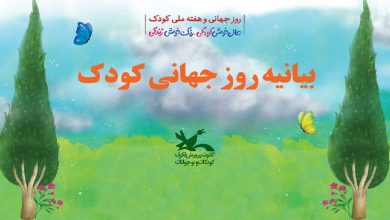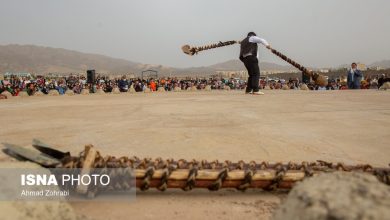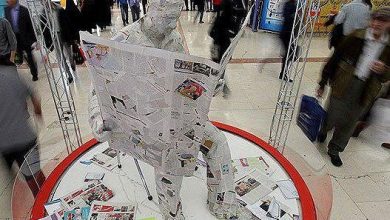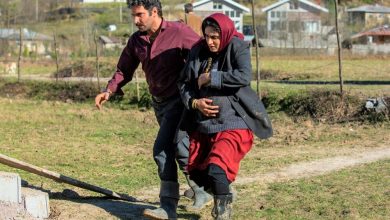At Imad Afrug’s memorial service, the future he envisioned for Iran and his unfulfilled dream of Iran were discussed.
According to informants, the memorial service for Imad Afrug and the unveiling of the book “Iran the Future” was held at the 34th Tehran International Book Fair on Wednesday, May 27 by the Regional Headquarters for Comprehensive Development.
In this meeting, the family of the late Imad Afrug Ali Ramzani, Vice President of the Book Fair, Ali Reda Shifa, Member of the Scientific Council of the Al-Ishraq Institute for Science and Politics and Director of the Office of Political Economy in the Ministry. The Shahid Rezaei Research Institute, Hamid Malekzadeh, Vice President for Social Culture and Senior Vice President and member of the Central Council of the Headquarters for Progress and Innovation, as well as Mohsen Dinavi, President of the Foundation for the Future of Iran, attended the event.
Dr. Avrog’s will was the basis for promoting his thoughts and ideas
At the beginning of the program, Zahra Kazempour, Imad Afroh’s wife, said: Every year we used to come to the exhibition with him, and he would see new books and buy them sometimes. But this year we got there without his presence. I am glad that Dr. Avrug’s name and good memory remain. At his funeral and memorial service, everyone gathered, some media made headlines, and the movement of reformists and fundamentalists spread. He always said that friendships were lost because of these factions, and I hope that friendships will increase from now on with the dissemination of the doctors’ ideas, which were their main concern.
Then he said: Dr. Ofrog has always said that he did not witness the publication of his ideas during his lifetime, he always hoped that this would happen after his death, and in fact his will to be the “foundation” for the publication of his ideas was shaping up for this issue. Anyone who wants to help us achieve this.
In response to this question, Kazempour said that, in Imad Afrou’s opinion, he did not have political factions, but he was a thoughtful politician, and said: Dr. Afrouh has about 40 works, from democracy to justice and theory of science and practice. , and citizenship rights. In fact, he looked at the community to see what the community needed, and based on that he entered into discussion and research, and his research was of a high degree of credibility.
Reminding: Dr. Afroh did not like to be called a political activist, people’s pain and suffering was important to the doctor, and he always tried to take the burden off people’s shoulders, behind his politics was thought and theory, he even predicted future issues and their hearts beat for Iran.
Imad Afrouj’s wife added: Whenever Iran was humiliated or Iran’s flag and anthem were insulted, they were deeply upset that our identity is our flag and anthem, and access to power and wealth was an escape from it. It was believed that in our country people grow from strength to wealth, while in many countries this is not the case. He worked hard for an article. We lived together for forty years, and no book missed more than a few hours of sleep at night.

He also mentioned that Imad Afroh was a man of hope and reminded that Dr. Afroh’s presence and his interview about the future of Iran is due to the fact that the Islamic Revolution must become global. Twenty years ago, he said the dollar should be taken out of our economy, but he paid no heed. He was never disappointed, many people described him as disappointed, but he advised to be patient and not be discouraged with sincerity.
In a continuation of the ceremony, Mohsen Dinavi, editor-in-chief of the book “Iran Ainada” said about the name of the book: The story of this book dates back to the last year of the century, that is, the year 1400; The idea for the book and the interest in the interviews came about and we started these conversations with a team we’ve worked closely with for nearly a decade.
He added, “Future Iran” has a unique feature, there is a long history and the formation of fronts for each topic of discussion. But the future of Iran is in a state of uncertainty that allows everyone to talk and think about it. Everyone is uncertain about the future, and the challenge we face today in this direction, and the future of Iran allows us to share issues with others.
Dinavi said: The book starts from a structure and a question from the 1920s and 1930s in Iran, when all the converging forces came together for development, but what happened. The 1920s and 1930s are important decades for Iran and have become important since 1301 when the modern state was formed. The 1340s were also the golden age of economics and the 1350s were an inflationary explosion, and we must look for the reason for the formation of the Islamic Revolution in this context.
Recalling: The last question in the interview is that we are at the end of the century and how do you imagine the future image of Iran, and this was a good and interesting question.
And as a continuation of the ceremony, Imad Afroh’s family was honored in the presence of Abdullah, the publishing director, Jawad Mohaqiq, the poet, Ali Ramzani, deputy director of the exhibition, and Maysam Nili, CEO of the Islamic Revolution Publishers. organized.
Then Ali Reza Shafih also said in a speech: Sometimes we think that everything has a future and we think that it is not rare, but in today’s world at least this situation has changed. I have rejected many forward-looking speeches. The Europeans also tried hard to present a plan for the future. But it is not easy to imagine the future. It seems that Iran could have a plan for the future.
And he continued: Historically, our country is not spontaneous, but it has a special meaning, and the people have united under the word Iran, and this is debatable. It seems that however unnecessary these futures contracts are, they are not home to Iran and do not protect Iran from risks. Today, Iran is moving toward peace.
Moreover, Hamid Malekzadeh, book designer and cultural deputy Mohammad Mokhber, said in a conversation about the future of Iran: The credibility of the bright future of Iran is due to the activities of Dr. Avrog.
He added: We’ve been talking for a long time. In these conversations, Dr. Afrug said: In my heart and soul, reaching this Iran is so important that sometimes I ask God to grant me a long life to see the glimmer of this Iran. Later, he told me about these characteristics of Iran for a long time and even explained them. After these talks, one of my thoughts became the dream of a future Iran.
Malekzadeh noted that Dr. Afrug kept this dream alive in stifling and pressure. I always have four questions in my mind about Iran’s future plan: First, why has Iran been unable to absorb the development model for nearly 50 or 80 years and not accept development? Why, despite the fact that we have prepared the ground for development patterns to some extent, development patterns are not included in our Iranian dictionary.
He added: Secondly, why can future Iran not paint such a picture of jurisprudence-based governance, even though we have been linked to Sharia for centuries. Third, is it possible to establish a relationship between a future Iran on the basis of progress and an Iran that has been partially achieved? What will be our relationship with development? And the last question is what is the map of Iran today with all the components from Iran today to the future?
This book was prepared by Asr Al Moharg Publications, a subsidiary of the Regional Headquarters for Comprehensive Development of the Executive Headquarters of the Hazrat Imam (RA) Division.
the end of the letter










